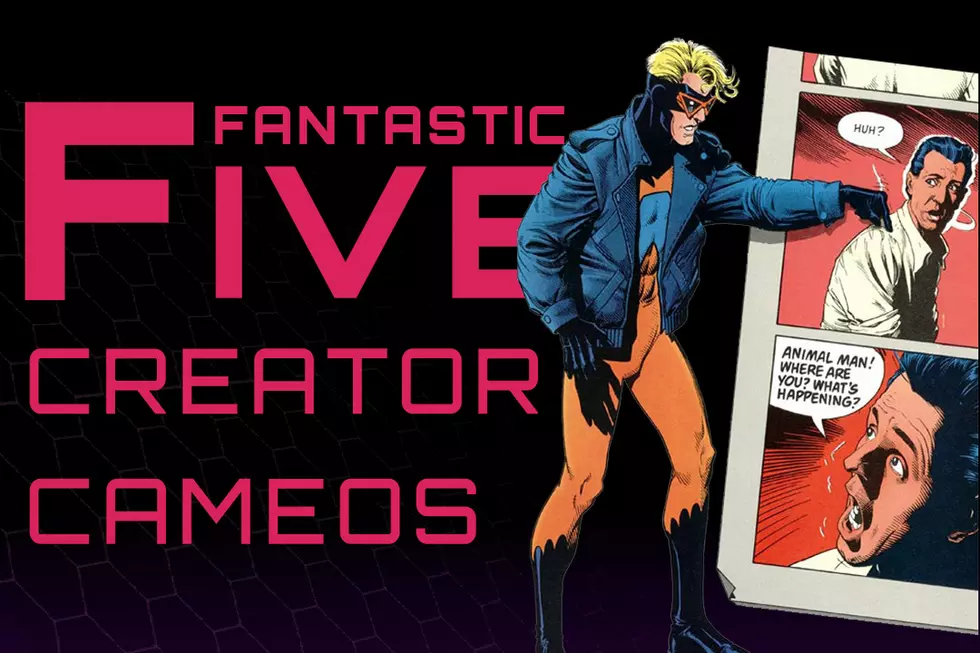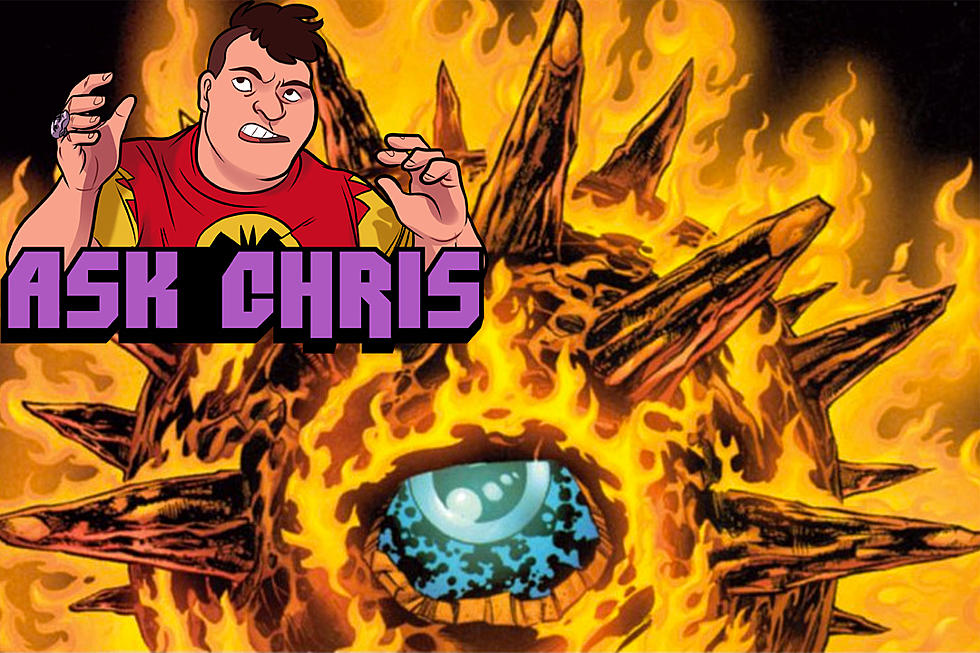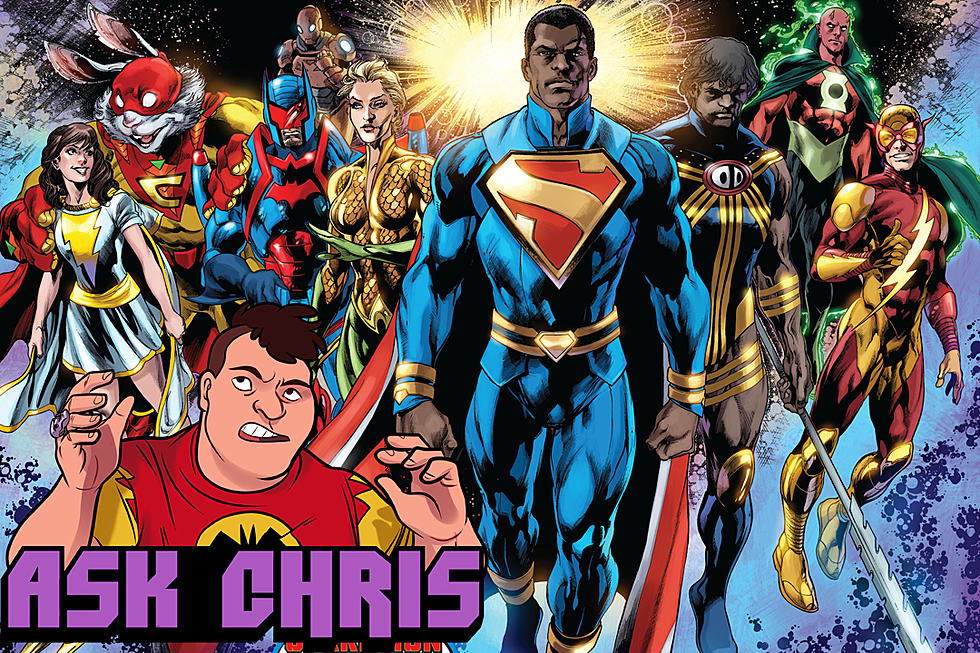
Ask Chris #281: The Cross-Time Connection Between ‘All Star Superman’ And ‘DC One Million’
Q: You've said DC One Million is both a prequel and a sequel to All-Star Superman. I agree! Why are we both right? -- @charlotteofoz
A: I'm glad you asked! As a writer, long-term plotting has never really been one of my strong points --- I'm more a student of that Larry Hama "never more than three pages ahead" sort of school --- but as a reader, there's nothing I love more than seeing threads tie together after years of groundwork being laid. It's that Chris Claremont, Walt Simonson style of plotting where seemingly insignificant elements and offhand remarks can suddenly gain importance, and where the same imagery can weave itself in and out of the story to give everything a new meaning. And what Grant Morrison, Frank Quitely and Val Semeiks did in DC One Million and All-Star Superman is one of the best and most subtle examples of long-term plotting ever.
Well. Subtle by superhero comic standards, anyway. It still involves a time-traveling Superman who lives inside the sun.
Given that it's probably the most widely read Superman story of the 21st century, it's not surprising that there are a whole lot of theories floating around about things that are going on just below the surface of All Star Superman.
The most famous, of course, is the whole "Xes and Os" theory about how Leo Quintum is actually a time-traveling Lex Luthor from the future who comes back to help Superman after his expanded super-senses in the final issue lead to a change of heart --- a theory that was pretty famously shot down by Frank Quitely at a panel when someone asked about it, and he was genuinely surprised to be hearing it for the first time.
The connection with One Million, on the other hand, isn't so much a theory as it is a set of dots right there on the page waiting to be connected in to a whole.
The problem is figuring out where to start with it. It's easy to say that All Star Superman takes place between the two bookend eras of DC One Million, because starting in 1998 and ending in the year 85,271 gives us a pretty wide net to work with. The thing is,that's not entirely accurate --- even though the last few pages of All Star are a prelude to the events of One Million, there's also a scene much earlier in the series that takes place well after the events of both stories. Time travel, y'all. It's a headache.
Basically, the question is whether you look at the events of those comics in the order that they were published, which is probably the smartest and easiest way to go about it, or whether you single out Superman as a character and follow those events from his perspective, which might actually be a little more interesting.
So let's go ahead and do that.
We're starting in All Star Superman #6 (January 2007), and while that might seem like an odd place to start, it's actually the single most important issue of the entire saga. The trick is that it's a flashback issue that actually isn't; a story where we think we're following a young Clark Kent at the start of his career, witnessing his last days as Superboy before the move to Metropolis and his debut as Superman, when we're actually seeing something very different --- something that's going to cause us to circle back through this issue not once, but twice before it's all said and done.
The key events of this issue for our purposes right now, though, is that it's Superman's first encounter with his own legacy. Specifically, it's a meeting with the Superman Squad, a team of Supermen from different eras that includes Kal Kent, the Superman of the 853rd Century:
They're there to fight the Chronovore, a monster that literally eats time, and is therefore pretty thematically appropriate for a group of time-traveling Supermen to fight.
Incidentally, it seems that Morrison's plans for the Chronovore were initially much bigger than what we've seen --- or at least, what we've seen so far, which is a pretty important distinction to make when you're talking about plots that sometimes take a decade or two to come to fruition. According to a few interviews with Morrison --- most notably on Sequential Tart --- the Chronovore was originally set to be the inciting enemy of Hypercrisis:
It's one thing I still want to do. It had a monster eating the first few years of the 21st century and Superman building a bridge across this gaping hole in time. A bridge made of events. The Guardians of The Multiverse and a new Green Lantern Corps made up of parallel reality Green Lanterns, the Superman Squad and the mystery of the Unknown Superman of 2150 etc, etc. There's a huge synopsis filled with outrageous stuff.
Unfortunately, Hypercrisis never happened, and while a few of Morrison's ideas for that story ended up in Final Crisis, the Chronovore was not one of them.
From there, we skip ahead to DC One Million #1 (October, 1998). At this point, Superman is a full-grown member of the Justice League. He's wrestled angels, he's been made of blue electricity; y'know, all the stuff that marks adulthood in comics. It's here when he meets Kal Kent again when Justice Legion A travels back in time to bring the members of the original Justice League to the future to celebrate Superman's emergence from his Fortress of Solitude in the sun.
A couple of things worth noting about this. The first, of course, is that Superman is in fact still alive in the year 85,271, but it's just as important to note that in Kal Kent's future, Superman has been living inside the Sun for an unspecified amount of time. It's clearly been long enough to be notable, since his emergence is a big enough deal to require eighty thousand years of time travel.
The second, however, is this:
So yeah, that's Kal Kent mentioning the events of a story published in 2006 as happening "two days ago" in 1998. Time travel!
While the JLA goes to the future and deals with all that, the Justice Legionnaires end up trapped in 1998, with humanity subjected to a techno-organic virus that they unwittingly brought back from the future. As part of the plan to deal with the Hourman Virus and get themselves home to their native era, they end up having to build their own future arch-nemesis: Solaris, the Tyrant Sun.
Solaris is mentioned as having a long, long history in DC One Million, plaguing the solar system for eons before it's finally reprogrammed to serve the greater good --- programming that, as you might expect from the name "Solaris the Tyrant Sun," didn't exactly take. As detailed in One Million, Solaris shows up time and time again, always attempting to extinguish the sun and replace it as the center of our solar system. But we'll get back to that in a second.
For now, we're shifting back to All Star #6. Remember how I said it was a flashback that actually wasn't? Rather than focusing on the younger Superman, it's revealed later in that issue that we've actually been following the adult Superman, who traveled back in time in disguise to spend a few final moments with his father.
But it's not long after that (at least, not long relative to that Superman) that he ends up fighting against Solaris, in what might be his first return after the events of DC One Million. It happens in All Star Superman #11, and sure enough, he's trying to destroy the sun.
It does not go well for Solaris, but before he gets punched out for good, he manages to poison the sun, setting off a chain reaction that can only be stopped by Superman himself, as the last of his Twelve Labors, going off to manually repair the sun and keep it from burning out and destroying the entire solar system.
See, despite the fact that it's an overdose of solar radiation that's supposed to be killing him throughout All-Star, it's actually just changing his form. You can see it when he leaves Lois for the last time, his body already starting to break down and transform into something that looks more like golden light:
At the end of the story, after we skip ahead a year to find that Superman still hasn't returned, Lois says with all confidence that Superman will be back once he's finished the job. The problem is that building an artificial heart for the sun is a pretty all-consuming task, and no one is quite how long that's going to take. Unless they've read DC One Million, that is, in which case they know exactly how long it's going to take. It's about 83,000 years.
That's the moment that Superman went into the "Solar Fortress of Solitude" --- not when he retires, because Superman never retires, he keeps on fighting that never-ending battle to save us all --- and that's why, when he finally makes it back out in DC One Million #4, his physical form has changed quite a bit:
And sure enough, he wasn't understating things when he said that he'd love Lois Lane until the end of time. One of the big tributes that's put on with the incredible science of the 853rd century, along with rescuing his home planet from destruction and reviving it as New Krypton, is to fold space and time around a DNA sample and finally, finally reunite Superman with Lois Lane.
But despite Superman's victory and the cheerful wink at Kyle Rayner, it's not quite the end of the story. There's one quick epilogue, and once again, it happens in All Star #6, when the Leader of the Superman Squad pays a visit to the past and reveals himself to be Clark Kent himself, the Golden Superman of the Far Future, bearing gifts from the resurrected New Krypton:
"Which of my descendants are you?"
"Ha."
And that, more or less, is the All Star/One Million connection from Superman's point of view. It's well-trod territory, sure, but it never ceases to amaze me how well it all hangs together, and how both of those stories combine to form one full picture.
In DC One Million, we never know why Superman went into the sun, so we're missing the beginning, and in All Star, we never see Superman reuniting with Lois --- they end that story tragically separate. Together, though, you get it all, even if it's told in the choppy kind of order that you can only really get from two separate time travel stories printed almost a decade apart.
More From ComicsAlliance









